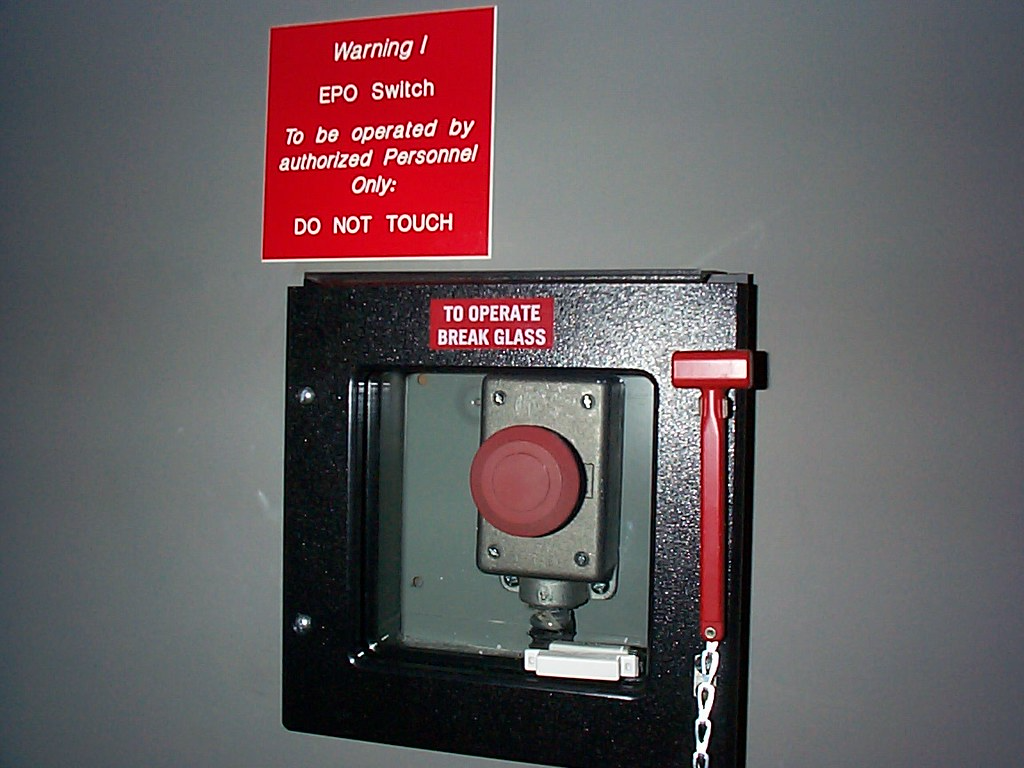
Emergency Electrical Safety Plan: Power Tips
Having an Emergency Electrical Safety Plan is crucial for every household. Electricity powers our lives, but it can also pose significant risks if not handled properly. Whether you’re dealing with power outages, electrical fires, or other emergencies, having a well-thought-out plan ensures the safety of your family and property.
This plan encompasses several key components:
- Identifying Emergency Shut-Off Locations:
- Knowing where to find the main circuit breaker or fuse box is essential. In emergencies, shutting off power quickly can prevent further damage.
- Locate gas and water shut-off valves as well. Turning them off during electrical incidents can prevent additional hazards.
- Assembling an Emergency Kit:
- Prepare an emergency kit containing essentials like flashlights, batteries, a battery-powered radio, and a first aid kit.
- Keep emergency contact numbers readily accessible.
- Educating Family Members on Electrical Safety Protocols:
- Teach everyone in your household about electrical hazards and safe practices.
- Discuss what to do during power outages, electrical fires, or shocks.
- Create Evacuation Routes:
- Develop exit routes specific to electrical hazards. Identify safe exits from each room.
- Designate assembly points away from electrical equipment.
- Practice Drills:
- Conduct regular drills with your family to practice emergency procedures.
- Test your knowledge of shutting off utilities and evacuating safely.
- Install Smoke Alarms and Carbon Monoxide Detectors:
- Place smoke alarms and carbon monoxide detectors in key areas of your home.
- Test them regularly and replace batteries as needed.
- Avoid DIY Electrical Repairs D
- While it’s essential to know how to turn off power, avoid attempting complex electrical repairs during emergencies.
- Call a professional electrician for any significant issues.
Remember, a well-prepared plan can make a significant difference during critical moments. Let’s delve into the details of each component to ensure your family’s safety!
Identifying Emergency Shut-off Locations
1. Main Circuit Breaker or Fuse Box:
Location: Typically found in the basement, garage, or utility room.
Identification: Look for a metal or plastic panel with switches (breakers) or fuses. Each switch or fuse corresponds to a different circuit in your home.
Importance: In emergencies, such as electrical fires or overloaded circuits, turning off the main breaker disconnects power to the entire house.
2. Individual Circuit Breakers for Major Appliances:
Location: These are usually located near the appliance they serve.
Identification: Check for labeled breakers or switches. Common ones include:
Water Heater: Often has its own breaker.
HVAC System: Look for a dedicated breaker for the furnace or air conditioner.
Kitchen Appliances: Stove, oven, microwave, dishwasher, and refrigerator may have separate breakers.
Washer and Dryer: Each may have its own circuit.
Importance: Knowing which breaker controls specific appliances allows you to isolate power during maintenance or emergencies.
3. Gas and Water Shut-off Valves:
Gas Shut-off Valve: Locate the gas shut-off valve near your gas meter or where the gas line enters your home. Turn it clockwise to shut off gas supply during gas leaks or emergencies.
Water Shut-off Valve: Find the main water valve for blocking water flow, usually near the water meter or where the water line enters your house. Turn it clockwise to stop water flow during pipe bursts or leaks.
4. Communication with Family Members:
Educate everyone in your household: Make sure family members know where these enclosed spaces are and how to use them safely.
Practice: Conduct drills to simulate emergency scenarios and practice shutting off utilities.
Quick and informed action during emergencies can prevent further damage and ensure everyone’s safety. 🏠🔌🚨
Assembling an Emergency Kit
Creating an emergency kit is a smart and proactive step. Here’s what you should include:
Flashlights and Batteries:
Flashlights: Have at least one reliable flashlight per family member.
Extra Batteries: Store extra batteries for the flashlights.
Battery-Powered Radio:
A battery-operated radio allows you to stay informed during power outages or emergencies.
Tune in to local news and emergency broadcasts.
First Aid Kit:
- A well-stocked first aid kit is essential. Include:
- Bandages, gauze, and adhesive tape
- Antiseptic wipes or solution
- Tweezers and scissors
- Pain relievers (e.g., acetaminophen or ibuprofen)
- First aid manual
- Any necessary prescription medications
Emergency Contact Numbers:
- Write down important phone numbers:
- Local emergency services (police, fire, medical)
- Family members or friends
- Poison control center
- Utility companies (gas, water, electricity)
Keep this list accessible (e.g., near the phone or in your wallet).
Remember to regularly check and update your emergency kit. Being prepared can make a significant difference during unexpected situations!
Educating Family Members on Electrical Safety Protocols
Educating your family members about electrical safety is crucial to prevent accidents, injuries, and property damage. Here are some essential tips to share with your household:
Never Use Electrical Devices Near Water:
Importance: Water and electricity don’t mix well. Wet hands or wet surfaces increase the risk of electric shock.
Safety Tip: Avoid using electrical appliances (such as hairdryers, phones, or radios) near sinks, bathtubs, or pools.
Avoid Overloading Outlets:
Importance: Overloading outlets can cause fires or damage to electrical circuits.
Safety Tip:
Use power strips with surge protectors to distribute load evenly.
Don’t plug too many devices into a single outlet.
Unplug chargers and devices when not in use.
Teach Children Electrical Safety:
Importance: Children are curious and may not understand the dangers of electricity.
Safety Tip:
Explain the risks of playing with electrical outlets, cords, and appliances.
Use outlet covers to prevent accidental insertions.
Emergency Shut-Off Locations:
Importance: Knowing how to shut off electricity during emergencies is critical.
Safety Tip:
Locate the main circuit breaker or fuse box.
Teach family members how to turn off individual breakers for specific appliances.
Understand gas and water shut-off valves as well.
What to Do in Electrical Emergencies:
Electrical Fire:
Safety Tip: If there’s an electrical fire, do not use water. Use a fire extinguisher or smother the fire with a non-flammable material.
Call: Dial emergency services (911) immediately.
Electrocution or Shock:
Safety Tip: If someone is electrocuted, do not touch them directly. Turn off the power source or use a non-conductive material to separate them from the electrical source.
Call: Seek medical help promptly.
Remember, knowledge and preparedness save lives. Regularly review safety measures with your family, practice drills, and ensure everyone knows how to respond during electrical emergencies.
Create Evacuation Routes:
Here are some steps to create effective exit routes specifically for electrical hazards:
Identify Safe Exits:
Map out the layout of your building or home.
Locate all exits, including doors, windows, and emergency exits.
Ensure that each room has at least two exit options.
Mark these exits clearly on your escape plan.
Electrical Hazard Zones:
Identify areas with electrical equipment, such as fuse boxes, circuit breakers, and power panels.
Highlight these zones on your evacuation plan.
Avoid using these areas as primary exit routes.
Designate Assembly Points:
Choose safe assembly points away from electrical equipment.
Select outdoor locations or open spaces where everyone can gather.
Ensure that assembly points are easily accessible from different parts of the building.
Evacuation Routes:
Plan primary and secondary evacuation routes for each room.
Consider the following factors:
Obstacles: Identify any obstacles (furniture, debris, etc.) that may block exits.
Stairs: If your building has multiple floors, include stairwells as evacuation routes.
Windows: In case of blocked exits, know which windows can be used for escape.
Emergency Equipment: Locate fire extinguishers, emergency lights, and alarms.
Mark these routes on your escape plan.
Communication:
Ensure that everyone in the building is aware of the evacuation plan.
Practice evacuation drills regularly.
Assign responsibilities (e.g., floor wardens) to guide others during emergencies.
Remember, safety is paramount. Regularly review and update your evacuation plan to account for any changes in the building layout or electrical equipment. Stay informed and be prepared! 🚀🔌
Practice Drills:
Regular practice drills are essential for ensuring everyone’s safety during emergencies. Here’s how you can conduct effective practice drills with your family:
Emergency Procedures Drill:
Set a Scenario: Choose a specific emergency scenario (e.g., fire, earthquake, power outage).
Sound the Alarm: Simulate the emergency by sounding an alarm (use a whistle or shout “Emergency!”).
Practice Evacuation: Everyone should follow the evacuation routes you’ve planned. Use both primary and secondary exits.
Designate Assembly Point: Gather at the designated assembly point away from electrical hazards.
Review Roles: Assign roles (e.g., floor wardens, first aid responders) and ensure everyone knows their responsibilities.
Evaluate Performance: Discuss what went well and identify areas for improvement.
Utilities Shutdown Drill:
Learn Utility Locations:Become familiar with the location of utility outlets (e.g., gas, water, electricity).
Practice Shutting Off Utilities:
Electricity: Show family members how to turn off the main circuit breaker or individual breakers.
Gas: Know where the gas shut-off valve is located and practice turning it off.
Water: Locate the main water turn off tap and demonstrate how to close it.
Safety Reminder: Emphasize safety precautions while handling utilities (e.g., wear gloves, use tools).
Communication and Reunification:
Cell Phones: Practice calling or texting each other during the drill to ensure communication.
Reunification Plan: Discuss where to meet if family members are separated during an emergency.
Emergency Contacts: Share emergency contact information with everyone.
Remember, practice makes perfect! Regular drills will help everyone stay calm and respond effectively during real emergencies. 🚀🔌
What are some common mistakes people make during emergency drills?
During drills, people may inadvertently make some common mistakes. Here are a few to be aware of:
Lack of Seriousness:
Some individuals treat drills casually, not realizing their importance.
Mistake: Not taking the drill seriously can lead to inadequate preparation.
Ignoring Alarms:
People sometimes hesitate to respond immediately when alarms sound.
Mistake: Delaying evacuation can be dangerous during a real emergency.
Using Elevators:
In high-rise buildings, using elevators during drills is a common mistake.
Mistake: Elevators may malfunction during emergencies, trapping occupants.
Not Knowing Exits:
Failing to know alternate exits or emergency routes.
Mistake: Relying solely on familiar exits can be problematic if those routes are blocked.
Crowding at Exits:
Everyone rushing to the same exit simultaneously.
Mistake: Congestion can slow down evacuation and create safety hazards.
Forgetting Utilities Shutdown:
Neglecting to practice shutting off utilities (gas, water, electricity).
Mistake: In a real emergency, knowing how to turn off utilities is crucial.
Not Designating Assembly Points:
People may not establish clear assembly points.
Mistake: Chaos and confusion can occur if everyone scatters in different directions.
Skipping Communication Practice:
Not testing communication methods (cell phones, walkie-talkies) during drills.
Mistake: Lack of communication can hinder coordination.
Ignoring Support Needs
Overlooking family members with functional needs (e.g., older people, disabled individuals, children
Mistake: Failing to account for everyone’s safety.
Overlooking Reunification Plans:
Not discussing where to meet if separated during an emergency.
Mistake: Difficulty in locating family members afterward.
Remember, drills are opportunities to learn and improve. Addressing these mistakes can enhance your emergency preparedness!
What are some tips for avoiding these mistakes
Certainly! Here are some helpful tips to avoid common mistakes during emergency drills:
Take Drills Seriously:
Mindset Matters: Approach drills with a serious mindset. Treat them as valuable learning opportunities.
Educate Everyone: Ensure that all participants understand the purpose and importance of drills.
Immediate Response to Alarms:
React Promptly: When alarms sound, act immediately. Don’t hesitate or assume it’s a drill.
Practice Speed: Encourage swift evacuation without panic.
Stairs Over Elevators:
Avoid Elevators: During drills, always use stairs instead of elevators.
Elevator Risks: Elevators may malfunction or become unsafe during emergencies.
Know Multiple Exits:
Learn All Exits: Familiarize yourself with alternate exits from each room.
Practice Routes: Regularly practice using different exit paths.
Avoid Exit Congestion:
Spread Out: During drills, avoid crowding at a single exit.
Maintain Order: Organize participants to prevent congestion.
Utilities Shutdown Practice:
Learn Utility Locations: Know where gas, water, and electricity shut-off points are.
Hands-On Practice: Physically practice shutting off utilities (if safe to do so).
Clear Assembly Points:
Designate Locations: Choose assembly points away from hazards.
Mark Clearly: Ensure everyone knows where to gather after evacuation.
Communication Drills:
Test Communication: Practice using cell phones, walkie-talkies, or other devices.
Emergency Contacts: Share contact information and practice reaching out.
Address Functional Needs:
Create tailored plans for family members requiring additional support.
Assist Others: Help those who may require extra support during drills.
Reunification Plans:
Discuss Meeting Points: Establish clear reunification locations.
Remember Contacts: Memorize emergency contacts or keep them handy.
Remember, preparedness saves lives. Regular practice and attention to detail will enhance your ability to respond effectively during real emergencies! 🚀🔌
Install Smoke Alarms and Carbon Monoxide Detectors:
Installing smoke alarms and carbon monoxide detectors is a crucial step in ensuring the safety of your home. Here are some guidelines to follow:
Smoke Alarms:
Placement: Install smoke alarms on every level of your home, including the basement and near sleeping areas.
Interconnected Alarms: If possible, choose interconnected alarms so that when one alarm detects smoke, all alarms sound simultaneously.
Ceiling Mounting: Mount alarms on the ceiling, at least 4 inches away from walls.
Test Regularly: Test alarms monthly and replace batteries annually.
Replace Old Alarms: Replace smoke alarms every 10 years.
Carbon Monoxide Detectors:
Strategic Placement: Install carbon monoxide detectors near sleeping areas and on each level of your home.
Avoid Obstructions: Place detectors away from curtains, furniture, and other obstructions.
Combination Units: Consider combination smoke and carbon monoxide detectors for added safety.
Test and Replace: Test detectors regularly and replace them according to manufacturer recommendations.
Remember, these devices are your early warning system. Regular maintenance and testing are essential to keep your home safe! 🚀🔌
Avoid DIY Electrical Repairs During Emergencies:
Absolutely! Knowing how to safely turn off power during emergencies is crucial. However, attempting complex electrical repairs without proper expertise can be risky. Here are some important points to consider:
Emergency Priorities:
Safety First: Always prioritize safety over DIY repairs.
Immediate Hazards: If there’s an immediate electrical hazard (e.g., exposed wires, sparks, smoke), evacuate and call for professional help.
What You Can Do:
Power Off: If it’s safe, turn off the power to the affected area or appliance.
Minor Fixes: Simple tasks like changing a blown fuse or resetting a tripped circuit breaker are manageable.
What to Avoid:
Complex Repairs: Leave intricate electrical repairs to professionals.
Inadequate Knowledge: Avoid working on circuits or wiring if you lack expertise.
Temporary Fixes: Duct tape or makeshift solutions are not safe during emergencies.
When to Call an Electrician:
Significant Issues: For major electrical problems (e.g., total power loss, burning smell, flickering lights), call an electrician immediately.
Electrical Fires: If you suspect an electrical fire, evacuate and call emergency services.
Remember, your safety matters most. When in doubt, seek professional assistance! 🚀🔌
In summary, creating an Emergency Electrical Safety Plan is essential for every household. By following the steps outlined in this plan, you can significantly enhance your family’s safety:
Take action now to implement these steps. The peace of mind that comes from being prepared for electrical emergencies is invaluable. Your proactive approach can make a significant difference when unexpected situations arise. Stay safe, stay informed, and protect your loved ones!








